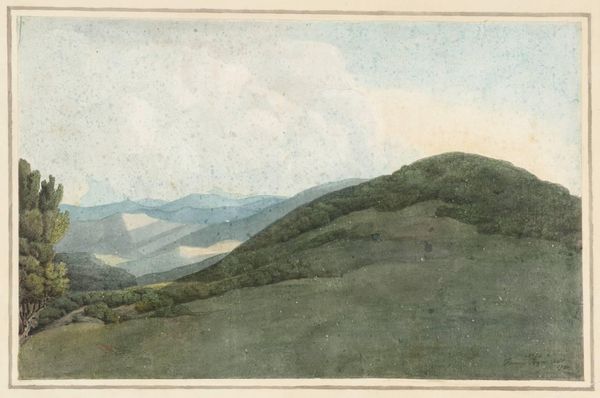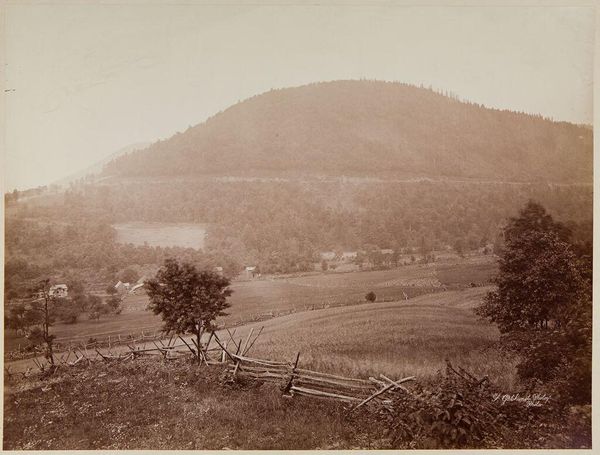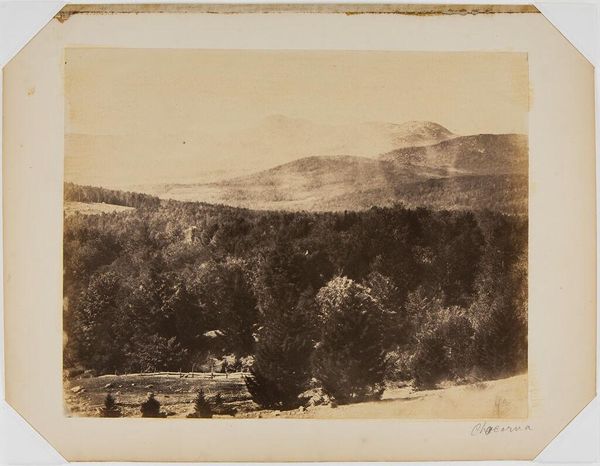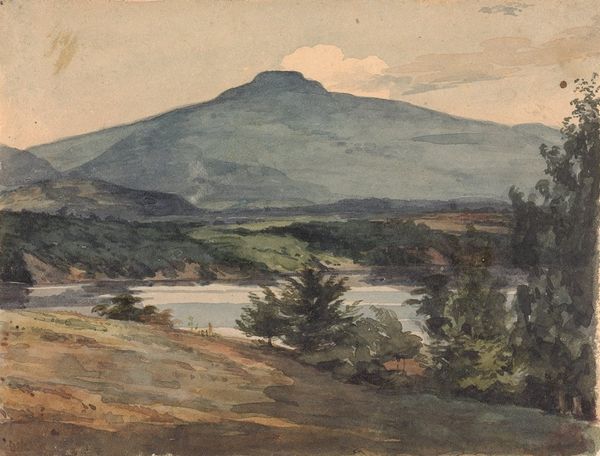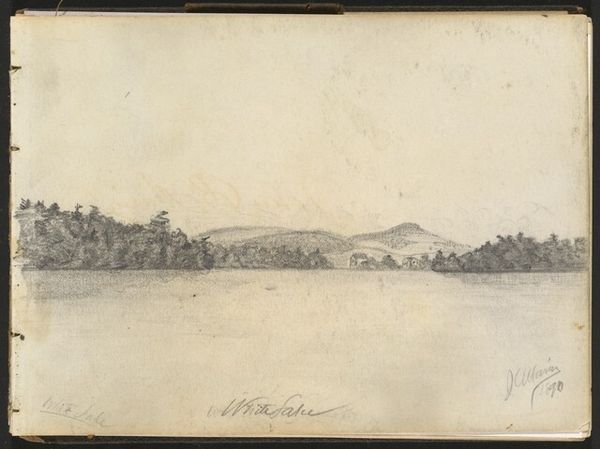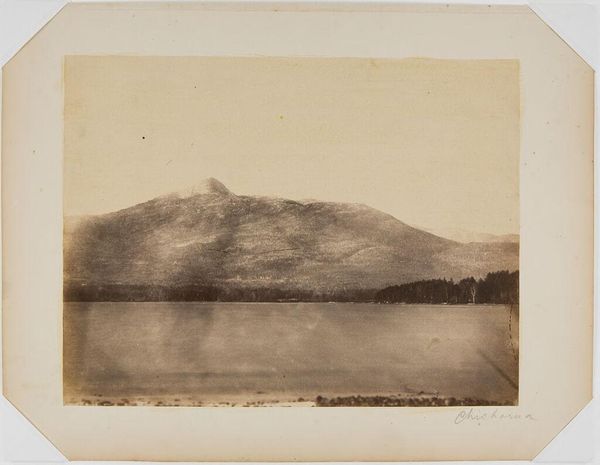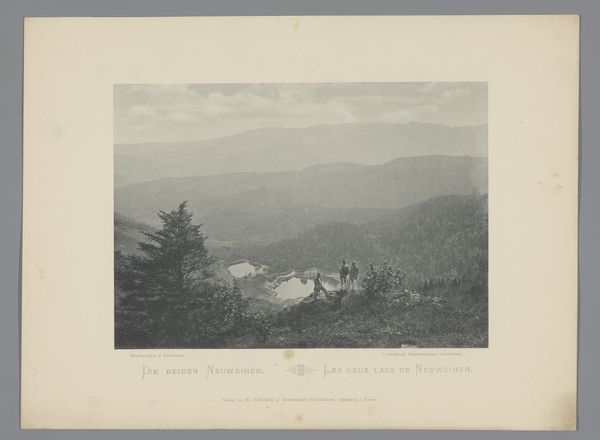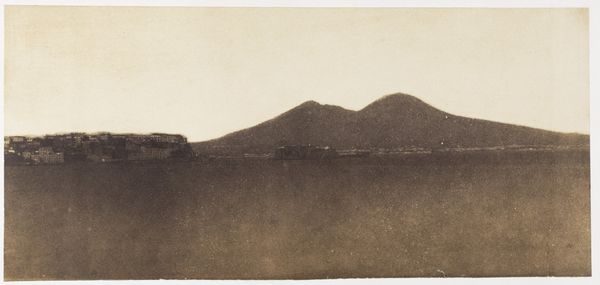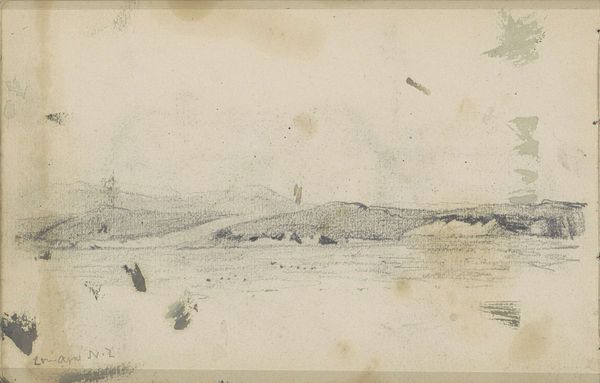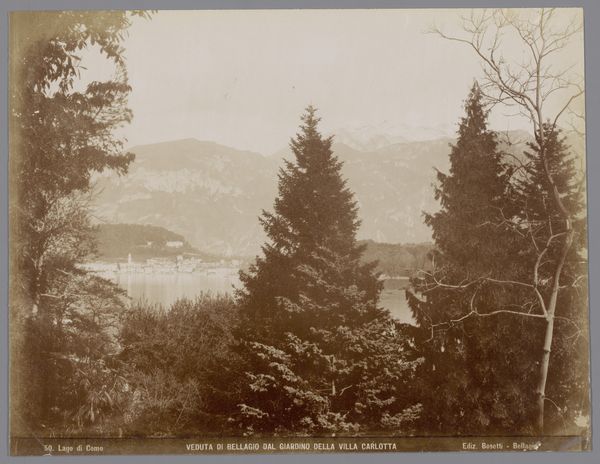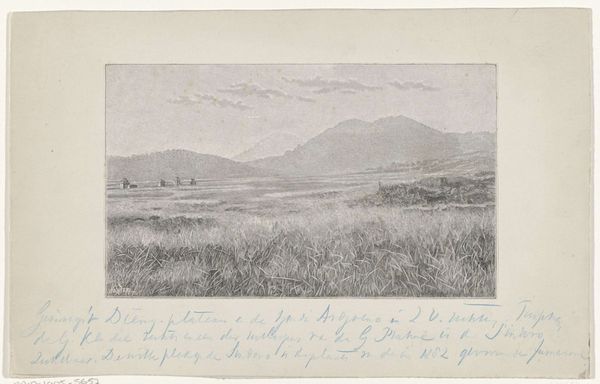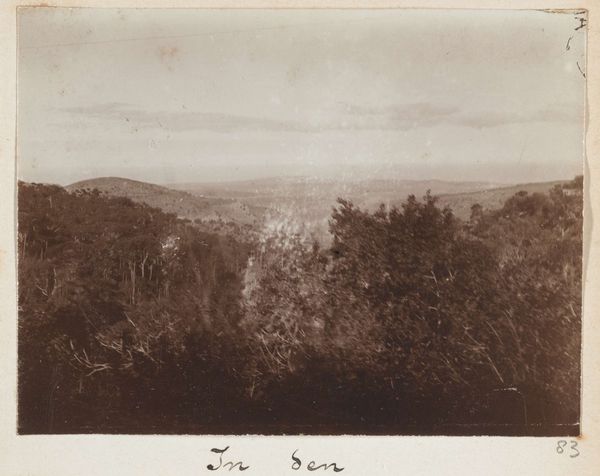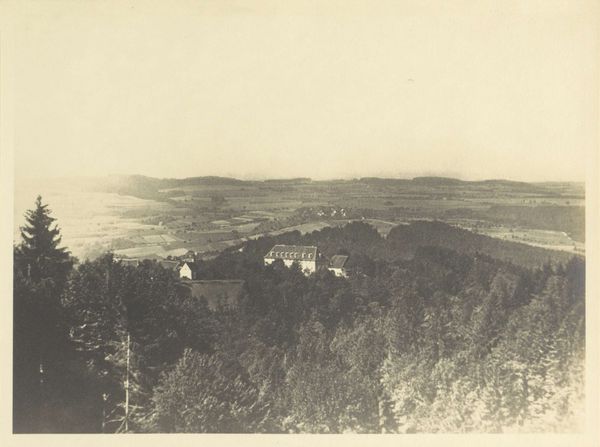
Dimensions: support: 200 x 238 mm
Copyright: CC-BY-NC-ND 4.0 DEED, Photo: Tate
Editor: So, here we have Cornelius Varley's "Evening at Llanberis, North Wales." It feels quite subdued, almost melancholic. What social commentary might Varley be making through this depiction of the Welsh landscape? Curator: It's interesting you pick up on that mood. Consider how landscape painting in this period often served nationalistic agendas. Was Varley promoting a specific vision of Wales, perhaps romanticizing it or aligning it with certain social ideals? Editor: That's a good point, I hadn't thought about the political implications of landscape art itself. So, the absence of people here, is it a statement on rural life? Curator: Possibly. Or perhaps it is about the sublime power of nature, dwarfing human concerns. Think about the patrons for whom Varley was creating this work. What messages were they hoping to receive and circulate? Editor: I see. It's not just about the pretty scenery, but about the ideas and power structures behind its representation. Thanks for that, a lot to consider. Curator: Indeed. Every image carries a history and serves a purpose beyond the purely aesthetic.
Comments
tate 7 months ago
⋮
http://www.tate.org.uk/art/artworks/varley-evening-at-llanberis-north-wales-t01710
Join the conversation
Join millions of artists and users on Artera today and experience the ultimate creative platform.
tate 7 months ago
⋮
Cornelius Varley devoted most of his life to scientific instrument making. In the first decade or so of the nineteenth century however, he was equally active as an artist. This watercolour was made on a visit to Wales in 1805, when he also wrote detailed descriptions of atmospheric phenomena. In one account he traced 'the gradual progress from a cloudless morning to universal rain' in the region of Snowdon. Varley combined his precise observation of nature with a personal, almost spiritual interpretation of the landscape, which he expressed by eliminating detail to create an effect of mystery and grandeur. Gallery label, September 2004

